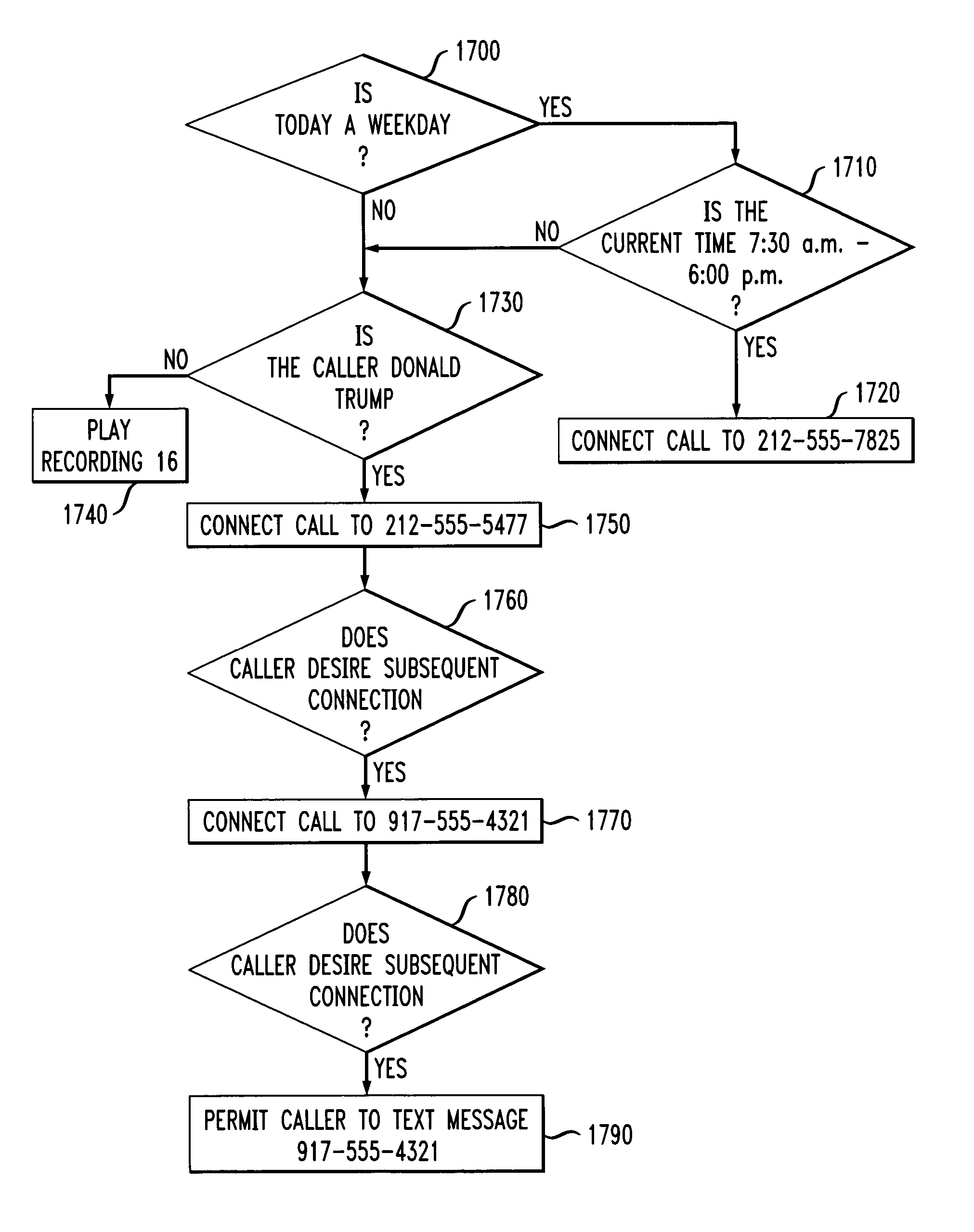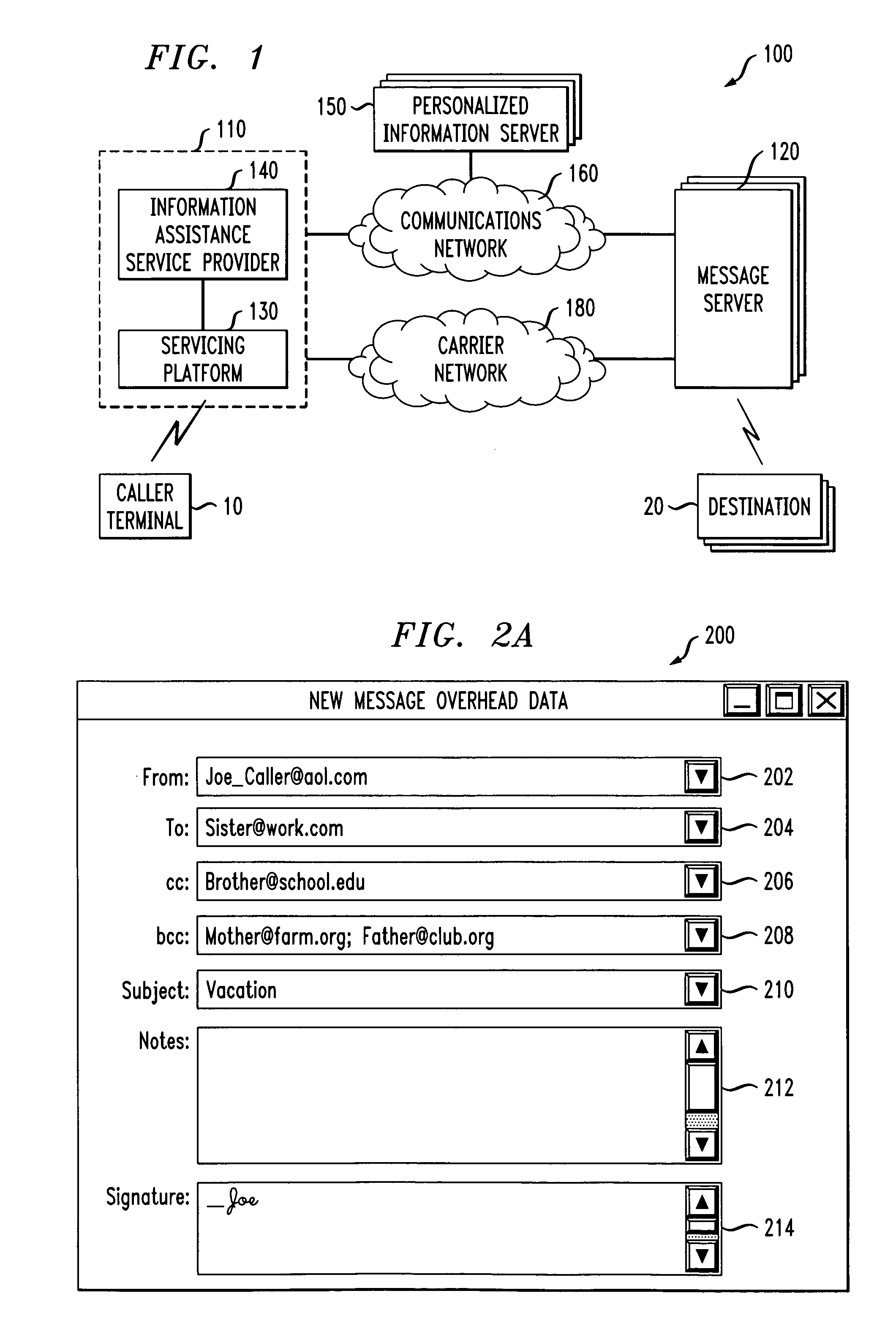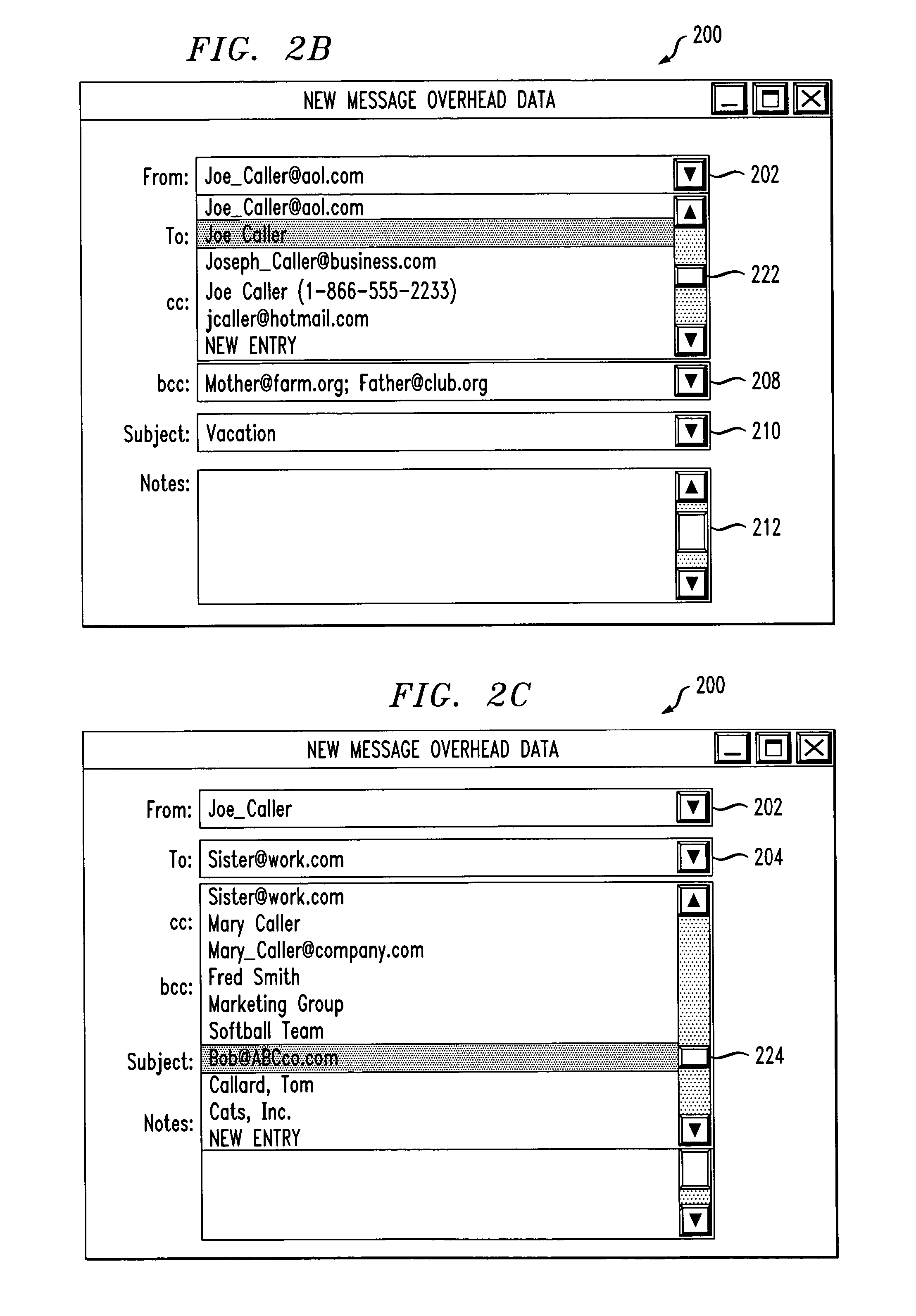Technique for assisting a user with information services at an information/call center
a technology for information services and call centers, applied in special services, navigation instruments, instruments, etc., can solve the problems of inconvenient use of information services, poor suitability of mobile telephone customers, and inability to have pencils and paper in order
- Summary
- Abstract
- Description
- Claims
- Application Information
AI Technical Summary
Benefits of technology
Problems solved by technology
Method used
Image
Examples
Embodiment Construction
[0044]FIG. 1 illustrates arrangement 100 in which a caller initiates an information assistance call from caller terminal 10, which is routed to, say, information / call center 110 via one or more carrier switches in a carrier network, e.g., a public switched telephone network (PSTN), a wireless telephone network, etc. Caller terminal 10 may comprise a wireless telephone, wireline telephone, personal digital assistant (PDA), computer, or other communication device. In a typical directory assistance call, a caller identifies to the operator the name and address (sometimes city or area code) of a party whose telephone number is desired. In response, the operator locates the desired destination telephone number using, e.g., a computer database. The destination number is then provided to the caller, e.g., by a computerized voice server which provides automated voicing of the number, and the caller is afforded an option to be connected to the destination number without the need of first ter...
PUM
 Login to View More
Login to View More Abstract
Description
Claims
Application Information
 Login to View More
Login to View More - R&D
- Intellectual Property
- Life Sciences
- Materials
- Tech Scout
- Unparalleled Data Quality
- Higher Quality Content
- 60% Fewer Hallucinations
Browse by: Latest US Patents, China's latest patents, Technical Efficacy Thesaurus, Application Domain, Technology Topic, Popular Technical Reports.
© 2025 PatSnap. All rights reserved.Legal|Privacy policy|Modern Slavery Act Transparency Statement|Sitemap|About US| Contact US: help@patsnap.com



